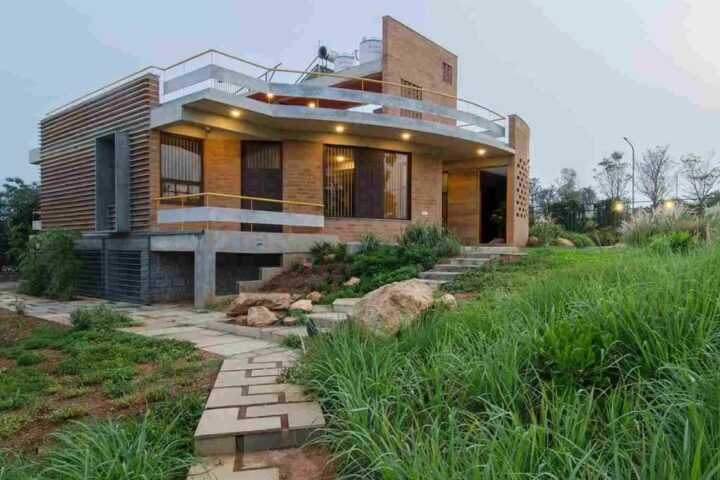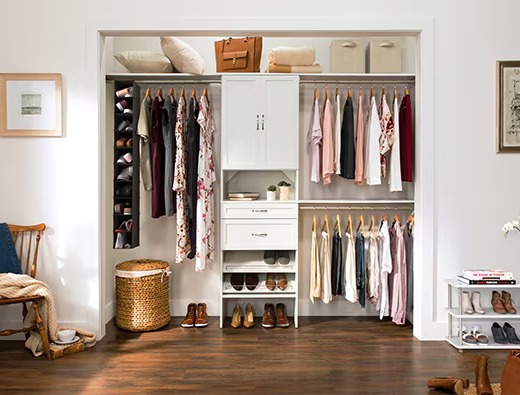In today’s world of climate awareness and environmental responsibility, more homeowners are embracing the idea of designing sustainable homes—structures that minimize environmental impact while maximizing energy efficiency, comfort, and long-term savings. Whether you’re building your dream home or considering a major renovation, creating a sustainable home from the ground up allows you to make eco-conscious choices every step of the way.
Here’s a practical guide to designing a sustainable home that supports both the planet and your lifestyle.
Choose The Right Location And Orientation
Sustainability starts before construction even begins. The location and orientation of your home can significantly impact its energy use. Ideally, you’ll want to take advantage of natural light, airflow, and insulation from the surrounding landscape.
- Orient Your Home To The Sun: In colder climates, position windows to the south to maximize passive solar heating. In warmer areas, limit direct sun exposure on the west side to reduce cooling needs.
- Use Natural Landscaping: Trees, shrubs, and native plants can act as windbreaks or provide shade, reducing heating and cooling demands.
Use Eco-Friendly Building Materials
Selecting sustainable materials is a key component of eco-conscious construction. Look for products that are locally sourced, recycled, or renewable.
Some great options include:
- Reclaimed wood for flooring, beams, or siding.
- Recycled steel for framing and reinforcements.
- Bamboo for cabinetry or flooring (it grows back rapidly).
- Low-VOC paints and adhesives, which improve indoor air quality.
- Insulated concrete forms (ICFs) or rammed earth walls for thermal efficiency.
By choosing durable, high-quality materials, you not only reduce your environmental footprint but also increase your home’s longevity.
Prioritize Energy Efficiency
Energy-efficient systems are the backbone of a sustainable home. Start with these essential features:
- High-Performance Insulation: Properly insulated walls, roofs, and floors reduce the need for constant heating and cooling.
- Energy-Efficient Windows: Double- or triple-glazed windows help maintain indoor temperature.
- LED Lighting: Uses up to 90% less energy than traditional bulbs.
- Smart Thermostats: Automatically adjust heating and cooling for efficiency and comfort.
Consider adding solar panels to offset your electricity usage or even reach net-zero energy consumption over time.
Make Water Conservation A Priority
Freshwater is a precious resource, and your home design can help conserve it in practical ways:
- Install low-flow faucets, showerheads, and toilets to reduce water usage.
- Use greywater systems to recycle water from sinks and showers for landscape irrigation.
- Consider rainwater harvesting systems to collect and reuse rainwater for gardening or cleaning.
Outside, opt for drought-resistant landscaping and drip irrigation systems to keep your garden green without wasting water.
Plan For Waste Reduction And Recycling
Sustainable homes also consider what happens during and after construction. Minimize waste by:
- Using modular construction techniques or prefabricated components.
- Recycling construction materials on-site.
- Designating space in the kitchen or garage for recycling and composting bins.
Think Long-Term And Future-Proof
Sustainability is about more than the environment—it’s about creating a home that works for the long haul.
- Design flexible spaces that can adapt to your changing needs.
- Choose low-maintenance materials to reduce future renovations.
- Invest in quality over trends to reduce waste from constant upgrades.
Also, keep resale in mind—sustainable homes are increasingly attractive to eco-conscious buyers and may command higher value in the market.
Final Thoughts
Designing a sustainable home from the ground up isn’t just a responsible choice—it’s a rewarding one. It allows you to live in a space that aligns with your values, reduces your carbon footprint, and saves money over time. By focusing on energy efficiency, natural materials, water conservation, and thoughtful planning, you can create a home that supports a healthier planet and a more sustainable future.
Find more insights in these resources:
https://xamshebeauty.com/
https://journalistenews.com/
https://remood.org/
https://lawandtechnology.net/
https://geohealthwestafrica.org/
https://jhomefashion.com/
https://supernorth.co.uk/
https://ournewstw.com/
https://averyhealthcare.org/
https://betonmoney.com/
https://lainhomecareservice.com/
https://meregrand.org/
https://thegreenhousecc.org/
https://treatmentdiariesblog.com/
https://releaseswebershandwick.com/
https://nickernewsblog.com/
https://releasesinpress.com/
https://mountainhometreeservice.com/
https://empeusacbd.com/
https://marijuanaonlineshopsupply.com/
https://homedocsmedical.com/
https://statianews.com/
https://medicalmarijuanacontrolact.org/
https://cbdhempoilqueen.com/
https://oblive.co.uk/
https://artwalknews.com/
https://holradio.net/
https://newst20.com/
https://homesinmia.com/
https://ncruralhealth.org/




